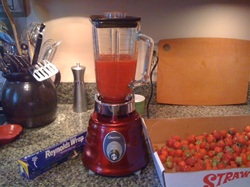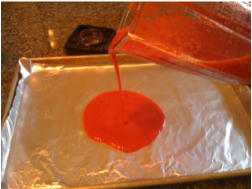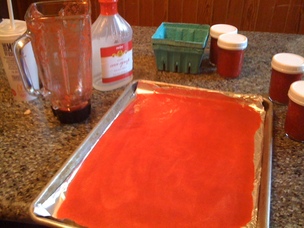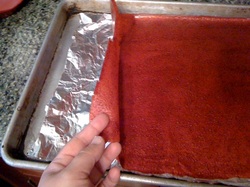
I first thought about making fruit leather when I came across a recipe for it in the Ball Blue Book of Preserving. Ball suggests using the following fruits alone or in combination: apples, apricots, berries, cherries, nectarines, peaches, pears, pineapple and plums. I often toss in a banana or a few tablespoons of plain or vanilla yogurt. (I would love to experiment with cooked rhubarb.) Fruits that oxidoze and turn brown need to be heated very briefly before spreading.
You will need a blender, two sheet pans, non-stick aluminum foil and a spatula. Oh, and fruit.




 RSS Feed
RSS Feed
